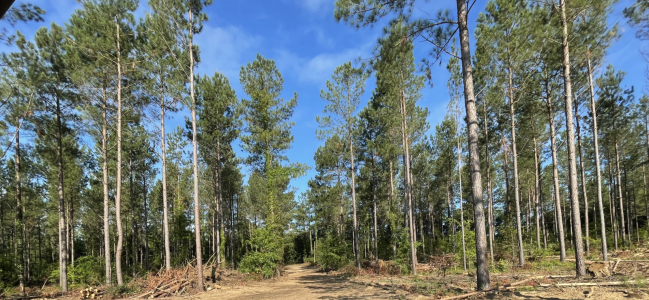Bowsnbucks
5 year old buck +
Everyone's local flora is different because we all live in varying regions of the country. Northern woods are different than southern or mid-western ones. For any guys that have logged - even small patches - an invitation to share what you've discovered.
Thought I'd report on results from several loggings we've done at our camp over the past 25 years, in 3 different sections of the land.
Getting sunlight on the ground has been a blessing. That alone triggers many native things in the seed bank to sprout and grow. What was pretty much a bare forest floor is now thick with new forbs, weeds, seedlings, and grasses. The diversity of growing things is a magnet for critters of all sorts. Caging stumps after cutting has produced many new "stump-shoots" from the established roots systems = browse and cover. Deer travel has increased in those areas, with some becoming bedding grounds. More deer STAY on our land now. Bird life has increased and become more varied, which helps with fruit tree-eating insects. Wildflowers / weed flowers draw more pollinating insects.
Beside the native growth just from sunlight, we've planted many Norway and white spruce trees in those logged areas. Along with providing shade in summer's heat, the spruce have become windbreaks and shelter in cold winter weather. Does and their fawns hide out in the cooler, shadier spruce thickets during summer. Young hemlocks are sprouting along the edges of the cut areas. Blackberries have popped up in many locations due to more sunlight & bird droppings. Deer browse on the tender, thornless new blackberry tips, and many critters eat the berries.
From thinning many soft maples from our woods, the oaks, hickories, tulip poplars, black cherries, and sugar maples have expanded their canopies. Having more sunlight and "elbow room" with less competition for nutrients has caused those remaining trees to put out more hard & soft mast for all critters. Acorn and hickory nut crops have increased. More sunlight / less competition also speeds growth of the hardwoods, allowing marketable timber sooner than if those areas had been left un-logged.
All in all, logging at our camp has created a patchwork of varying stages of new habitat growth. It broke up what had been basically a monoculture of mature trees & bare forest floors. We made money from the harvested timber, which paid / pays for habitat projects, and the resulting sunlight on the ground is FREE. Ma Nature is doing the bulk of regrowth, with a little help from us adding spruce seedlings over the years. Our property is better after several logging projects. More habitat diversity, more food & cover ........ more critters.
Thought I'd report on results from several loggings we've done at our camp over the past 25 years, in 3 different sections of the land.
Getting sunlight on the ground has been a blessing. That alone triggers many native things in the seed bank to sprout and grow. What was pretty much a bare forest floor is now thick with new forbs, weeds, seedlings, and grasses. The diversity of growing things is a magnet for critters of all sorts. Caging stumps after cutting has produced many new "stump-shoots" from the established roots systems = browse and cover. Deer travel has increased in those areas, with some becoming bedding grounds. More deer STAY on our land now. Bird life has increased and become more varied, which helps with fruit tree-eating insects. Wildflowers / weed flowers draw more pollinating insects.
Beside the native growth just from sunlight, we've planted many Norway and white spruce trees in those logged areas. Along with providing shade in summer's heat, the spruce have become windbreaks and shelter in cold winter weather. Does and their fawns hide out in the cooler, shadier spruce thickets during summer. Young hemlocks are sprouting along the edges of the cut areas. Blackberries have popped up in many locations due to more sunlight & bird droppings. Deer browse on the tender, thornless new blackberry tips, and many critters eat the berries.
From thinning many soft maples from our woods, the oaks, hickories, tulip poplars, black cherries, and sugar maples have expanded their canopies. Having more sunlight and "elbow room" with less competition for nutrients has caused those remaining trees to put out more hard & soft mast for all critters. Acorn and hickory nut crops have increased. More sunlight / less competition also speeds growth of the hardwoods, allowing marketable timber sooner than if those areas had been left un-logged.
All in all, logging at our camp has created a patchwork of varying stages of new habitat growth. It broke up what had been basically a monoculture of mature trees & bare forest floors. We made money from the harvested timber, which paid / pays for habitat projects, and the resulting sunlight on the ground is FREE. Ma Nature is doing the bulk of regrowth, with a little help from us adding spruce seedlings over the years. Our property is better after several logging projects. More habitat diversity, more food & cover ........ more critters.
